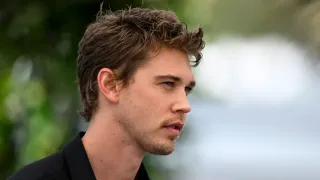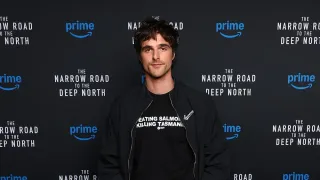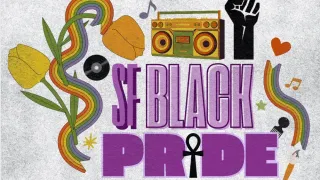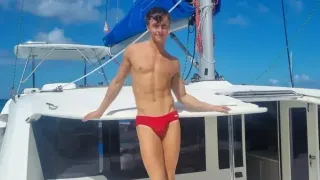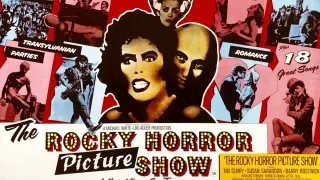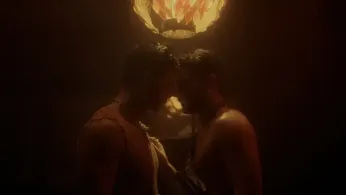
6 hours ago
Inside the Stall: “Cowboy, Choker, Harness & Heart” Brings Queer Nightlife’s Raw Truths to the Screen
READ TIME: 3 MIN.
In a cinematic landscape where depictions of queer nightlife too often lean toward the sanitized or superficial, “Cowboy, Choker, Harness & Heart” offers a bracing, unfiltered alternative. Co-directed by Nico Blanco and Julia Ponce Díaz, the short film takes place almost entirely within the cramped, electric confines of a club bathroom—a setting that becomes a crucible for desire, vulnerability, and humor .
Blanco, inspired by a real-life date that spiraled into unexpected flirtation with strangers, wanted to capture the “mess, intimacy, and humor” that pulse through these hidden corners of queer nightlife. “I rarely see queer nightlife shown as it really is,” Blanco explained. “I wanted to capture that play and self-discovery” .
Ponce Díaz, who joined the project as a classmate of Blanco’s at the American Film Institute, was immediately drawn to the prospect of digging into the emotional complexity beneath the chaos. “I wasn’t the team’s party girl,” she joked, “but I could dig into the characters, their desires colliding in this tight, specific space.” Their collaboration crystallized around a simple but potent philosophy: “desire always wins” .
The film is set in the vibrant, sometimes volatile world of a queer club bathroom, an environment familiar to many in the LGBTQ+ community as a site of both liberation and risk. Here, the boundaries between public and private blur, and the stakes of every glance, touch, and whispered secret are heightened. The film’s narrative unfolds as a swirl of overlapping encounters: lovers, friends, and strangers whose stories intersect in ways that are raunchy, funny, and sometimes painfully honest .
A standout moment—featured in the film’s trailer—shows a character caught in the act of making out, only to be interrupted by the arrival of his boyfriend, a twist that encapsulates the film’s blend of humor and genuine emotional stakes . The result is a narrative that refuses tidy resolutions, instead reveling in the complexity and unpredictability of queer desire.
The authenticity that pulses through “Cowboy, Choker, Harness & Heart” is no accident. The film’s creative team is composed of LGBTQ+ filmmakers and artists, including writers, producers, and a cast drawn from the communities the film represents . Cinematographer Olivia Segarra and editor Colton James contribute to the film’s kinetic, immersive style, which draws viewers into the emotional rhythms of the space .
The film’s production was supported by a network of queer collaborators, many of whom had previously worked together at the American Film Institute and in independent film circles. This collaborative spirit is evident in the film’s attention to detail—from costuming choices that hint at subcultural affiliations (cowboy hats, chokers, harnesses) to the soundtrack that pulses with club-ready beats .
Since its debut at LGBTQ+ film festivals—including a recent spotlight at a June Festival program celebrating queer cinema —“Cowboy, Choker, Harness & Heart” has drawn praise for its fearless portrayal of queer intimacy and nightlife. Critics have highlighted the film’s willingness to embrace the awkward, the erotic, and the absurd without sacrificing emotional honesty .
For many viewers, the film resonates as a rare example of media that neither glamorizes nor pathologizes queer nightlife but instead allows the messiness and beauty of these experiences to exist side by side. By centering the bathroom—not as a punchline, but as a site of real connection—the film pays tribute to the spaces where LGBTQ+ people have found both danger and community for generations.
As LGBTQ+ stories continue to push for more authentic and diverse representation in media, “Cowboy, Choker, Harness & Heart” stands as a testament to the power of telling stories that are grounded in lived experience. For directors Blanco and Ponce Díaz, the film is not just a snapshot of nightlife, but a statement about the ongoing need for spaces where queer people can explore, express, and simply exist—without apology or compromise.
With its blend of raunchy humor, sharp writing, and genuine heart, “Cowboy, Choker, Harness & Heart” is poised to become a touchstone for a new wave of queer cinema—one that refuses to tidy up for the mainstream, and is all the more vital for it.
